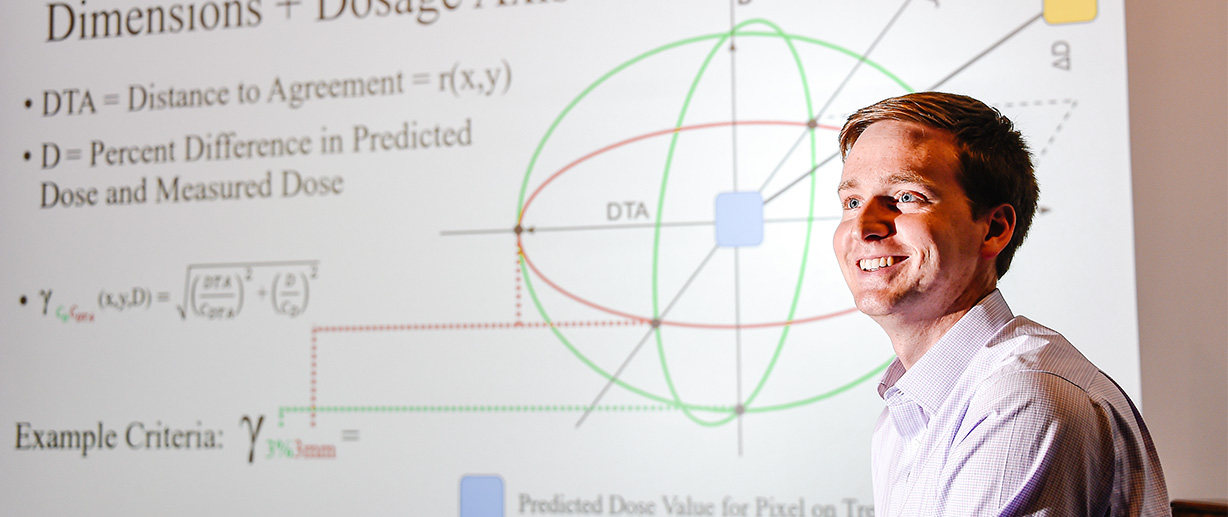By Robert W. Dalton
Andrew White ’22 set his sights on a medical career at an early age. He also enjoyed physics and exploring the world around him.
Picking one over the other was going to be difficult. When he arrived at Wofford College, White learned that he didn’t have to choose between the two.
“I was always interested in medicine because of my experience,” says White, a physics major from Clover, South Carolina. “It wasn’t until my first class here that I realized there’s a happy medium between medicine and physics.”
His “experience” was a bout with cancer during his first year of high school when he was diagnosed with nodular lymphocyte-predominant Hodgkin lymphoma, a rare form of the disease. He underwent chemotherapy and has been cancer free since 2014.
White realized he could combine his interests when the Department of Physics offered a medical physics course for the first time during fall semester in 2019.
This past summer, White was selected for an American Association of Physicists in Medicine fellowship. The AAPM picks 10-15 students annually for fellowships. White was matched with Duke University based on his interest in projects underway.
His research centered on developing a 3D quality assurance simulation for radiation therapy.
“Throughout the radiation treatment process, everything is done in 3D except the assurance simulation,” says White. “The diagnostic scan is done in 3D, the treatment planning is done in 3D, and the radiation delivery is done in 3D. We are attempting to replace current 2D simulations with a more precise 3D system. Implementing this technology will allow us to test treatment plans more accurately, reducing the potential for harmful side effects associated with missing the target and hitting some of the healthy tissue we’re trying to avoid.”
White continued the analysis of his research during the fall semester with some help from Dr. Mackay Salley, professor and chair of physics.
“His research is unique and aims to fill an important gap in the quality control of cancer treatment procedures utilizing ionization radiation,” Salley says. “Techniques developed from this work could be implemented in cancer treatment centers around the world.”
White presented some of his results at two conferences in the fall – the SoCon Undergraduate Research Forum (SURF) and the North Carolina Section of the American Association of Physics Teachers/Society of Physics Students Conference.
White will continue his work next fall. He earned a research assistantship and will pursue a doctorate in medical physics at the University of Wisconsin. The appointment covers tuition and will pay a stipend for his work in the university’s radiation calibration laboratory. The program is rated as one of the best in the nation in the field of medical physics.
“We are very proud of Andrew and all he has accomplished while here at Wofford College,” Salley says. “We look forward to hearing about his successes in the field of medical physics.”
